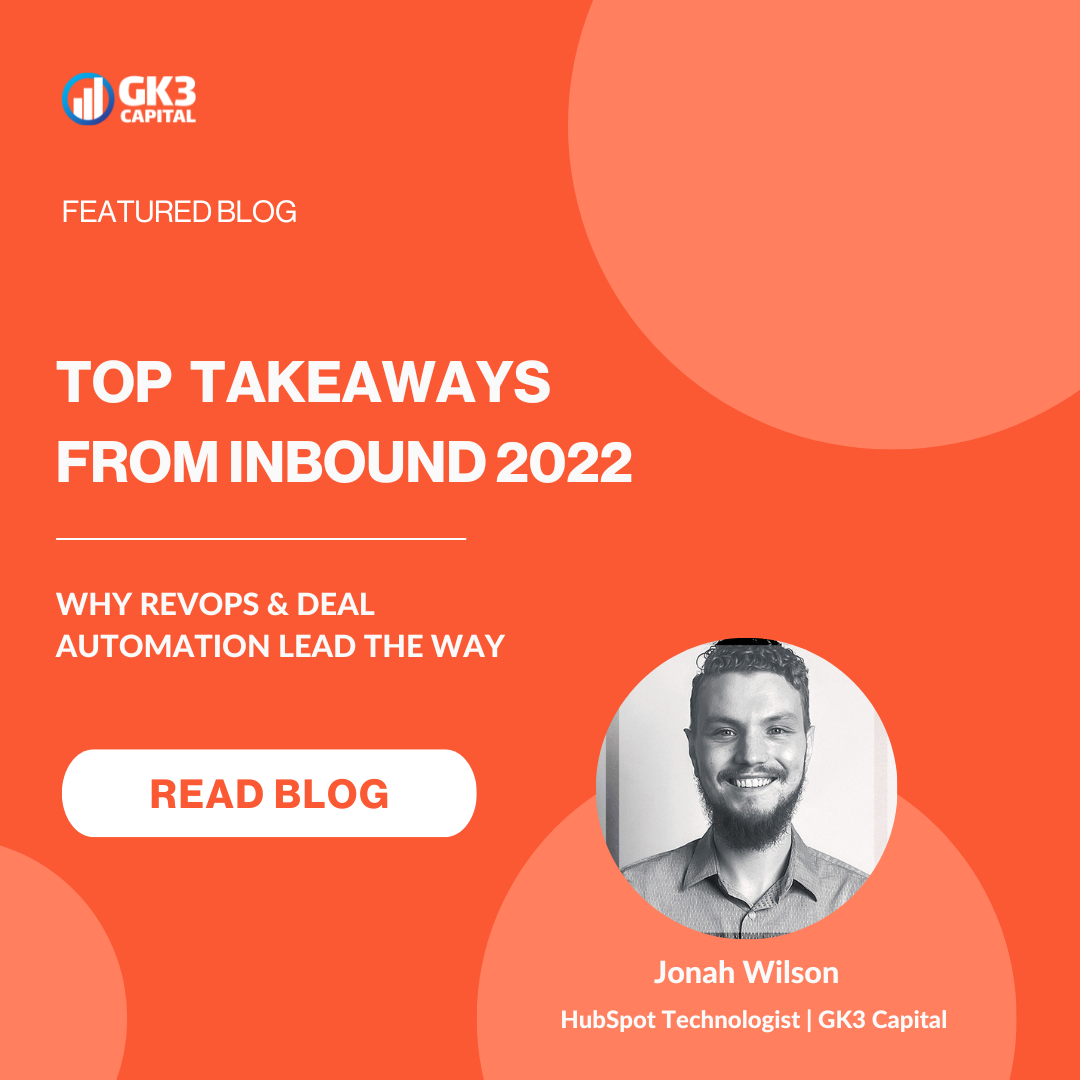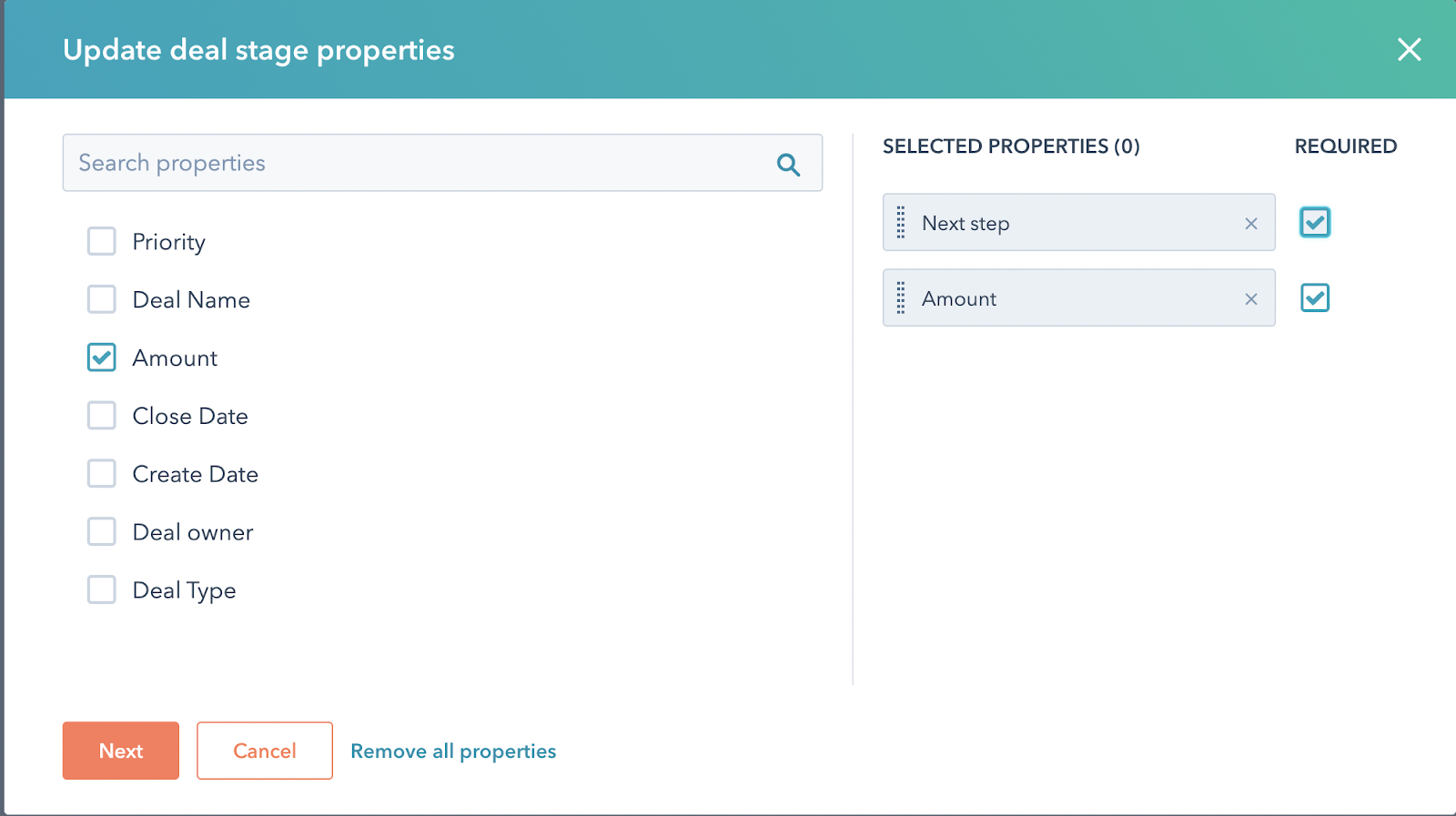Takeaways from Inbound 2022: Why RevOps & Deal Automation Lead the Way
September 29th, 2022
3 min read
By Jonah Wilson

GK3 Capital sent three of its HubSpot-centric leaders and specialists to the annual Inbound conference this year and we wanted to share their perspectives on what they found to be the most valuable takeaways. As a refresher, Inbound is one of the top global conferences for agency owners and marketing professionals to share insights and discuss emerging trends that will shape how companies operate.
This first recap is from Jonah Wilson, our Marketing Technologist who helps GK3 clients execute HubSpot best practices across their organizations.
Inbound 2022 Highlights - Marketing Technology
As a Marketing Technologist, my role at GK3 Capital focuses on marketing and sales alignment and automation. So, I was excited to see the number of new RevOps (revenue operations) presentations this year at Inbound, as this is the most notable area of growth and need for our clients. So, my first takeaway encompasses RevOps and its role in an organization.
A Revenue Operations Mindset is Necessary for 2023 and Beyond
To position your organization for growth, it’s essential to recognize that sales and marketing can no longer operate in isolated silos. Not only that, but marketing and sales need to be in alignment with customer service and experience. How does your organization do that? It starts with embracing a RevOps mindset.
During the Inbound session, RevOps: The Operating System for Scaled Growth, presenters Alison Elworthy & Sid Kumar addressed the question: What is RevOps? RevOps is often referred to as a company’s strategic integration of sales, marketing and service, but the presenters had a more powerful definition by describing RevOps as “the operating system to power delightful customer experiences.”
I’d take that a little bit further and describe RevOps as the operating system that teaches you how to cater to the right target audience, resulting in delightful experiences and ensuring relationships that generate greater revenue from each customer.
For example, rather than an organization’s sales manager telling his sales team to improve their lagging sales by “simply selling more,” RevOps first looks to see if the product being sold is targeted to the right audience. If not, RevOps helps marketing pivot and re-align, and then works with sales to determine where communication has broken down. The ultimate outcomes are:
- Better relationships between sales and marketing
- Improved customer experience
RevOps operates from a servant-based leadership style that builds trust and respect from the bottom up. To execute RevOps successfully, you need a dedicated team member willing to get in the trenches and do some of the hard work existing sales and marketing staff currently do to build better processes between the groups. If your organization commits to a RevOps mindset, you’ll enjoy the benefits of that effort for years to come.
Deal Stage Automation is Your Best Friend
During the Inbound session, Things Every HubSpot Admin Should Know, presenter Kyle Jepson discussed some interesting automation you can use when building out HubSpot Sales Hub.
One of those automations allows you to configure Deal Stage properties that pop up when a sales rep moves a deal from one stage to another. For example, when a deal is moved from Demo Completed to Proposal Sent, you can create an automation that prompts the salesperson to enter a “Next step” and “Amount” for the deal so you can build probability off the Proposal. (see example below).
And if you have HubSpot Sales Hub Professional and above, you can even make the fields required so a deal cannot move forward without populating the required fields.
 |
| Example: Updating the Deal Stage Properties that are shown when moving from one deal stage to another. Note: the "Required" checkbox is available for HubSpot Sales Hub Professional seats and above. |
Agile Marketing Enables Greater Efficiency
During the Inbound session, Managing a Small Marketing Team in an Agile Environment, we learned about the benefits of utilizing Agile methodology in marketing. Once popularized strictly for IT departments, Agile is an interactive approach to project management that helps teams deliver value to customers faster and with few issues. Today, Agile has found a home in many departments within organizations, including marketing.
Agile operates on the assumption that projects are developed in short, defined time frames allowing teams to make adjustments quickly and easily. So, even if your marketing team is great. A key aspect of Agile is that team members need to recognize that there will be failures along the way. And not only are failures allowed, they are encouraged. Why?
Because failure builds four important characteristics within a team:
- Relentless improvements
- Continuous curiosity
- Team collaboration
- Courage to fail
One way to create an Agile culture where failure can readily occur is to build extra time into a project for certain deliverables. For example, if you need a new piece of marketing content in two weeks, start the project a few weeks early so you’re actually allowing four weeks to complete. This gives your copywriters and graphic designers permission to try a new style or tone which could provide new and exciting outcomes that otherwise might not happen.
Interested in learning more about the power of Inbound? Watch our video series and discover how Inbound is the foundation for transforming your distribution process.
Jonah Wilson has a 7+ years of combined experience across sales, marketing and customer experience organizations. He is passionate about Hubspot and how to build workflow automation to increase sales and marketing enablement. As a Marketing Technologist with GK3 Capital, he assists with lead scoring, marketing automation and sales enablement efforts.


